Everything to play for - 2015 Season Preview
If it was the cars that attracted all the attention this time last year, this time it’s most definitely the drivers, with wholesale change across the grid.
Though he will necessarily miss the opening round in Melbourne after his testing accident, Fernando Alonso’s return to McLaren, and Sebastian Vettel’s move from Red Bull to the Spaniard’s vacated seat at Ferrari, have created dramatic and exciting prospects for both teams after their struggles last year.
Can the quadruple world champion help the heavily revamped Scuderia - and himself - back into the winner’s circle? Or will team mate Kimi Raikkonen recapture past glories in a car whose front end works the way he likes? And will Alonso likewise turn around McLaren’s fortunes as Honda come back into F1 racing for the first time since 2008? Or will the two-time champion be upstaged by Jenson Button? How long will the team’s teething troubles last?
With Felipe Massa and Valtteri Bottas maintaining the consistency at Williams, will all of them be able to hold a candle to the Mercedes of world champion Lewis Hamilton and the hungry Nico Rosberg, as the German vows to be even stronger than he was last year?
At the same time, 2014 sensation Daniel Ricciardo will be partnered by sophomore rising star Daniil Kvyat at Red Bull. Will the Australian continue the hugely impressive form with which he surprised the world as he thoroughly overshadowed Vettel, or will it be his turn to be upstaged by the highly rated Russian? Meanwhile, down at Toro Rosso two of the most promising rookies in recent years - Max Verstappen and Carlos Sainz Junior - add another fascinating dimension to the driver market. Both are quick and, like Kvyat last year, are set to leave a mark.
At Sauber, Felipe Nasr makes it two Brazilians in F1 racing, while Will Stevens adds a third British driver at the phoenix-like Marussia team.
And three other Britons will have chances to shine as test and reserve drivers: Susie Wolff and Alex Lynn at Williams, and Jolyon Palmer at Lotus.
For the second time in history there will be 20 races in a season, as Mexico makes a welcome return to the calendar for the first time since 1992, using a revised version of the famed Autodromo Hermanos Rodriguez in Mexico City.
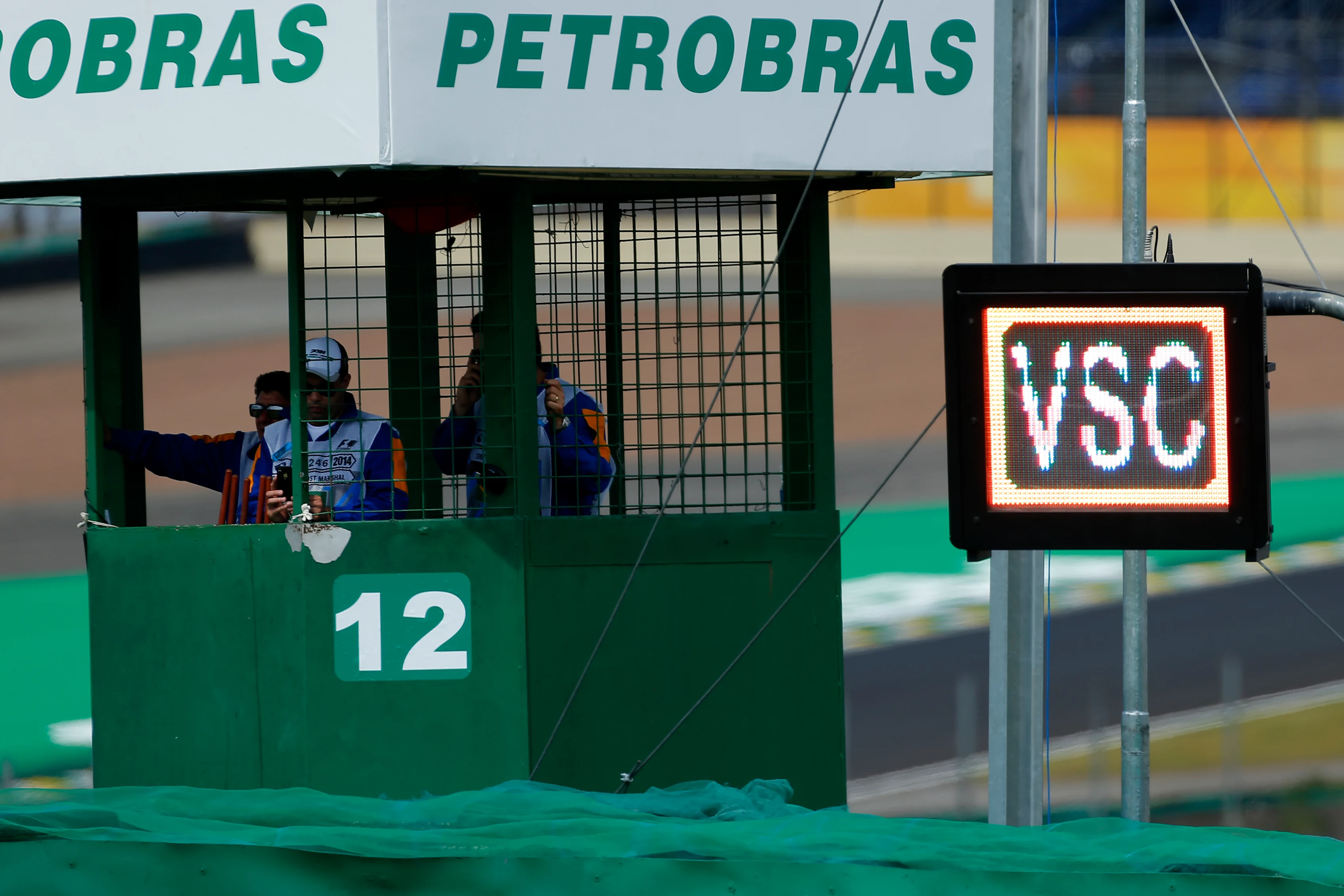
The Virtual Safety Car has been approved for 2015 and may be initiated to neutralise a race upon the order of the clerk of the course
The rule changes: There has been none of the wide-ranging changes we saw in 2014 with the introduction of the 1.6-litre turbocharged hybrid cars, but the most significant concern changes to the powertrains.
After heavy lobbying from the Ferrari and Renault-powered teams, who suffered from the two companies’ failure to build competitive engines for the new formula, the FIA was able to identify and exploit a loophole - despite understandable opposition from Mercedes who did far and away the best engineering job with the new powertrains and deserved to clean up - whereby Ferrari and Renault were able to bypass the agreed engine development freeze and make changes to their hardware to help close up the field.
The new powertrains had to be homologated by February 28th, 2014, with no further development allowed to the end of the season. But the 2015 rules only stated that the engines had to be homologated, without specifying a date. Thus Ferrari and Renault (and Mercedes should they wish) had longer to develop their 2015 powertrains than the end of February.
Each manufacturer is allowed a stipulated number of tokens which cover different aspects of the engines, and they are thus free to keep developing them until they have no tokens left, whereupon they can homologate the unit for the season.
Changes to the technical regulations include another increase of the minimum weight, which rises from 701 kg without fuel, to 702. Interlinked suspension is banned under rules dictating that the front suspension must react only to changes in load applied to the front wheels, and likewise for the rear suspension.
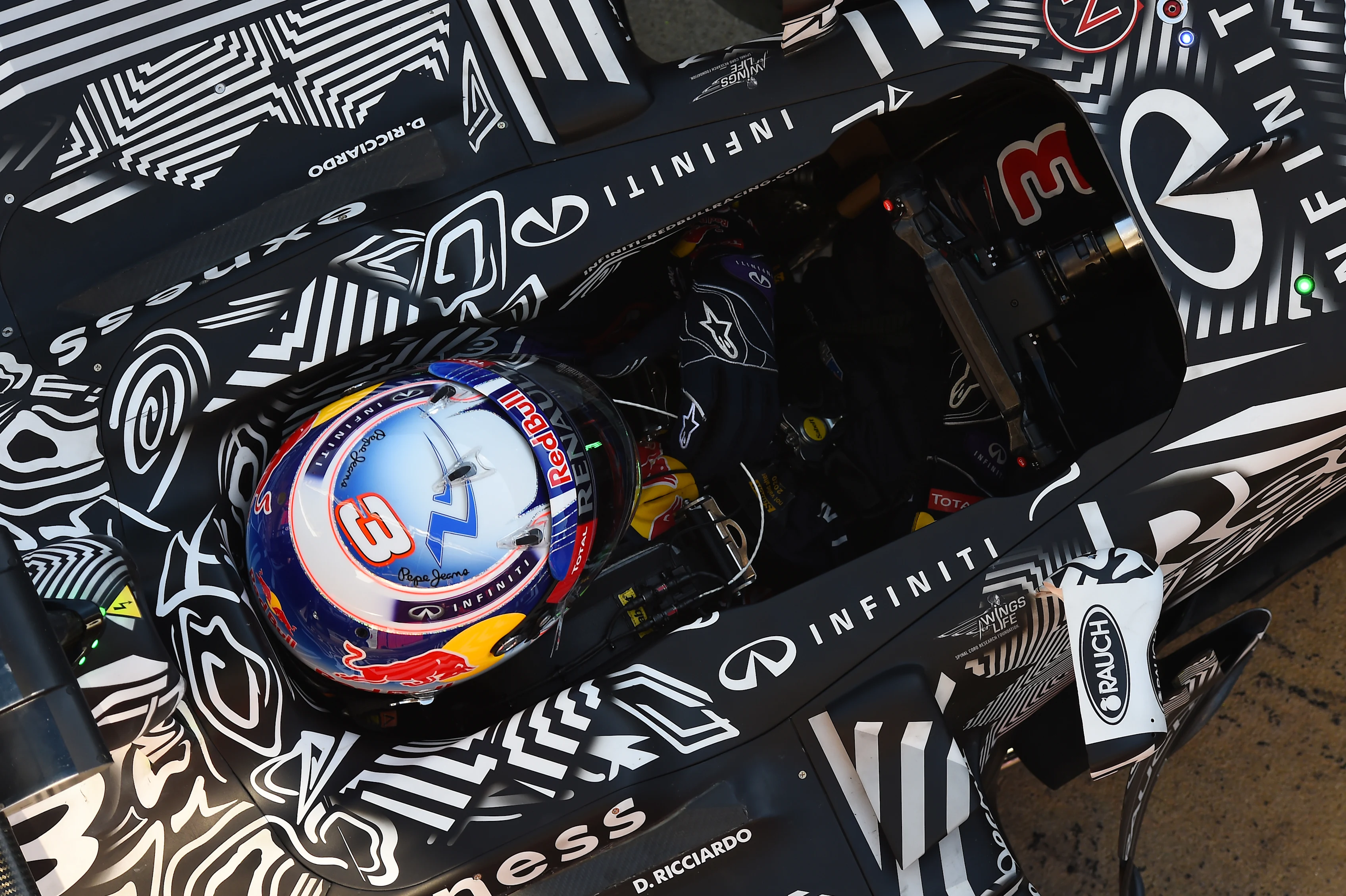
The Zylon anti-intrusion panels on both sides of the survival cell have been extended upwards to the rim of the cockpit and alongside the driver’s head
The Zylon anti-intrusion panels on both sides of the survival cell have been extended upwards to the rim of the cockpit and alongside the driver’s head, in response to Jules Bianchi’s accident, and there have been further limitations in the governance of wind tunnel testing and the aerodynamic reporting periods for 2015 and 2016.
Additionally, the FIA have revised the penalties for using more than the allotted allocation of power units in a single season (which has dropped from five to four). Changing a full powertrain will no longer incur an automatic penalty. Instead penalties will be cumulative, based on the individual components of each power unit. If a grid place penalty is imposed, and the driver’s grid position is such that the full penalty cannot be applied, the remainder of the penalty will be applied in the form of a time penalty during the race, instead of rolling over to the following race as another grid penalty.
Among changes under the Sporting Regulations, the qualifying procedure has been clarified: with 20 eligible cars, five will be excluded after Q1 and Q2. The controversial double points season finale is no more, and after consultation with the teams the proposed use of standing restarts after safety car periods has also been dropped. And following successful trials in the final races last year, the Virtual Safety Car has been approved for 2015. It may be initiated to neutralise a race upon the order of the clerk of the course, and will normally be used when double waved yellow flags are needed on any section of track and competitors or officials may be in danger, but the circumstances are not such as to warrant use of the safety car itself.
If a race is suspended, the pit exit will be closed and all cars must now proceed slowly into the pit lane, not the starting grid.
Too close to call
So will it be another two-horse race between Hamilton and Rosberg, with the rest breathlessly trying to keep up? Or can Williams get closer still after their impressive 2014 challenge, with Red Bull and Ferrari also reducing the deficit?
It’s always hugely difficult to assess pre-season testing with complete accuracy, thanks to vagaries such as chassis set-up, engine settings and fuel loads, but the work teams did in Jerez and Barcelona since January suggests that Mercedes are still some way ahead, but that Williams, Ferrari and Red Bull are closely matched, and McLaren-Honda are in trouble.
Here’s our assessment of each team, based on their winter performance.
Mercedes It says everything about Mercedes’ winter testing that they did all of their running on the hard, medium or test Pirellis, bar the final two days in Barcelona when they tried the softs and still went faster than any of their rivals did on the supersofts.
“It’s a work in progress but of course, it feels great,” world champion Lewis Hamilton says. “You know, it’s great to see all the work that’s gone in by the team and throughout testing it’s felt really good. Generally it’s been pretty awesome.”
Nico Rosberg, who did the most distance of anyone - 3,463 km against Hamilton’s 2,434 as Mercedes topped the list with 6,121 - says: "It’s been a great winter for us. We got off to a running start with not many reliability problems, and have been doing the mileage - which was great and important. Now we are able to extract performance from the car.”
And both drivers admit that they didn’t quite nail the set-up to go really fast in Barcelona…
Mercedes did, however, have a few reliability and driver health issues after Jerez. Hamilton lost time with a fever which stopped him running and left young reserve Pascal Wehrlein to drive, as Rosberg nursed a strained neck. Hamilton also had a worrying MGU-K failure on the final day of testing.
But if you look at the on-track performance of the sleek new F1 W06 Hybrid, you couldn’t blame pundits for predicting another head-to-head battle between Hamilton and Rosberg as the rest trail behind them.
Red Bull The two most remarkable things about Red Bull’s pre-season were the neat camouflage paint job used on the RB11 and the reliability issues that have dogged Daniel Ricciardo and new boy Daniil Kvyat. So much so that there’s a case for suggesting that we have yet to see the former champion team’s true form.
While Renault have made some progress, Red Bull have made it clear it isn’t enough, and there were unhappy faces when a motor problem hampered testing in Jerez. Then Kvyat took off the only front wing early on when he took over, forcing the team to run without it, way off the pace.
Things got better in Barcelona once software gremlins were eradicated, and reliability was good enough to enable both drivers to complete some race simulations.
The RB11 looked good out on the track, as one would expect of a Rob Marshall car in which Adrian Newey has still had a significant influence, but driveability shortcomings remain in the Renault powertrain, and the company admits things won’t be perfect in the opening races.
It remains to be seen how long it takes Renault, in particular, to help the team get into the anticipated best-of-the-rest fight with Williams and Ferrari in Mercedes’ wake.
Williams
Williams were the surprise of 2014, and after a string of podiums they came so close to a win in Abu Dhabi as Felipe Massa chased Lewis Hamilton all the way to the flag.
Winter work in Grove has focused on honing what was a very competitive package, and the indications on track are that the FW35 has better traction and aerodynamics while retaining the low-drag characteristics that made the FW34 so quick in a straight line in 2014.
Other areas that have received the most attention are operational, notably pit stops and strategic planning, the benefits of which won’t be seen until the racing starts.
Testing has gone very well, as the team initially resisted any temptation to grandstand while getting the grunt work out of the way, and when Massa and Valtteri Bottas did get going they were both very fast. Not Mercedes-fast, it must be said, but they seem very well placed to continue the progress they made in 2014, and to remain Mercedes’ strongest challenger to begin with.
Ferrari
Ferrari raised many eyebrows and sent cynicism needles into the red when they showed tremendous pace in Jerez at the start of testing. Their subsequent form in Barcelona wasn’t quite so impressive, and they have yet to reach Mercedes-level performance, but their dramatic improvement is on the radar of both Lewis Hamilton and Nico Rosberg, and Williams, Red Bull and Mercedes all say they expect the red cars to be at the sharp end of the battle.
There were some minor issues with sensors and new boy Sebastian Vettel’s embarrassing cold-tyre spin at the start of his first day in Barcelona, but otherwise the winter has been a massive fillip for the Scuderia which went through such a traumatic 2014 season.
The SF15-T has a much better engine and seems to have a very strong front end, to Kimi Raikkonen’s delight, and the chances are that the Finn will put up a much better showing against Vettel than he was able to against Alonso in 2014. That means Ferrari should have two cars consistently in the thick of things.
Rosberg is on record saying that Ferrari have made the most improvement of any team, and Williams certainly expect them to be trouble as their pace all but matched the Martini-liveried cars on the supersoft tyres.
McLaren
Ron Dennis has for a long time now talked of McLaren winning races again, something it hasn’t done since Brazil in 2012. When the new MP4-30 was launched he spoke enthusiastically of its potent new Honda hybrid motor, and its shrink-wrapped bodywork.
Returnees Honda were always going to be on their back foot playing catch-up with teams that went through all their teething troubles this time last year, but nobody could have foreseen just how tough their testing programme would be.
A raft of technical glitches limited mileage in Jerez, and the car lacked pace, then the Barcelona tests were characterised by ongoing problems with seals on the MGU-K component in the ERS. Throw in hydraulic and oil leaks and sensor problems in the final test which severely limited mileage - McLaren’s tally for all three tests was only 1,751 km - and it was small wonder that racing director Eric Boullier suggested that McLaren are 50 percent behind where they expected to be.
As if all that wasn’t enough, there was Alonso’s accident in the first Barcelona test - and the subsequent brouhaha and the medical imperative which will see the Spaniard miss the opening race. Thus the picture emerges of a team that has a very long way to go before it starts to satisfy either Dennis, or Honda on their F1 return.
On the positive side, when reserve driver Kevin Magnussen, who will replace Alonso in Australia, gave his feedback on the new car he was very enthusiastic about the modifications wrought by the arrival of former Red Bull aerodynamicist Peter Prodromou. He was called up late in the day after Alonso’s shunt, and only managed 39 laps in the second Barcelona test before an oil leak brought him to a halt. But in that time he learned enough to express an opinion that lifted spirits.
"The first feeling, on low-ish fuel, was very good and very consistent," he said. "It was very stable with no surprises. Last year's car was a bit more unpredictable, and it’s nice to see the work we did last year and the direction we wanted to go has definitely proved to be right for this car. It definitely feels like a completely different car. It’s very consistent, very predictable, and very smooth in. Just driveable.”
The aim was not necessarily to maximise downforce, but to make what downforce there is more consistent and predictable, and they seem to have succeeded with that.
Honda’s engine is still at an early stage of its development as a race unit. Observers’ favourite description during the testing was “unrefined,” and there were suggestions that its lack of systems reliability prevented the team from running anywhere near full power. But aspects of it impressed Magnussen, who, of course, compared it to the Mercedes powertrain he used last year.
"I was quite surprised about the torque delivery and upshifts," he said. "Although there is still some way to go, I was surprised how smooth it was. Pleasantly surprised.”
Force India
In complete contrast to McLaren, Force India displayed tremendous reliability when their VJM08 finally broke cover on the final two days of testing.
The team had done a little bit of running with the VJM07, on which the new car is necessarily based, but it was clearly a major relief when the new car managed an impressive 1,699 km in the hands of Sergio Perez and Nico Hulkenberg when it finally got going. That’s almost what McLaren achieved in all three tests.
Hulkenberg said that there is never any substitute for mileage, while Perez admits that they are probably two steps behind the opposition and said he expects it could take until the fifth race before that lost ground can be made up. Assuming that others don’t take steps forward in the meantime…
Toro Rosso
Toro Rosso’s start to testing was frustrated in Jerez by niggling problems within Renault's MGU-K, leaving rookies Max Verstappen and Carlos Sainz Jr to cool their heels.
Thereafter, however, they were both able to get the hammer down in Barcelona. Sainz crashed in Turn 3 not long after Alonso, during the first week, blaming high winds in that corner. That drama aside, the team amassed 5,534 km as the new boys learned all about qualifying and race simulations, tyre performance and pit stops.
The STR10 ran in launch guise for the first two tests, before what amounted to an all-new aero spec was ready for the third and final session. There still seem to be traction and handling issues to address, but as team boss Franz Tost eyes fifth place overall, Toro Rosso’s chances of making a strong start to the year look good.
Lotus
If looks are an indicator, Lotus will be a force to be reckoned with again in the upper midfield this year. The E23’s biggest asset, of course, is its Mercedes powertrain, but the car itself looks tidy and well thought-through, too. And courtesy of some aggressive soft-rubber runs, Pastor Maldonado set some fastest times in Barcelona when others were less adventurous.
Last year, missed testing really hurt a team that were very tight on budget; now things are better, though the new car was a day late running in Jerez. In a turn of events that must have reminded some of last year’s travails with Renault, they ran into problems with the powertrain and telemetry, but things were better in Barcelona, where a run on Pirelli’s supersoft tyres gave Grosjean the week’s fastest lap in the first test.
Both drivers say the car is a big step forward over the unliked E22, even though an unidentified brake failure on the final day of testing in Barcelona put Maldonado into the wall at Turn 4.
How far back up the order the team can get in its revamped state will be one of the fascinations of the season, in which they start as the darkest horse.
Marussia
Against all expectations, Graeme Lowdon and John Booth have saved the Marussia team, with investment from energy magnate Stephen Fitzpatrick, and Justin King as interim team chairman. They say they will run in Melbourne with 2015-legal versions of last year’s MR03 before a proper ‘15 car appears later in the season.
Sauber
Sauber got their campaign with the new C34 off to a great start with fast times in the Jerez test, but nobody was fooled as rookie Felipe Nasr was quickest on the third day and he and new team mate Marcus Ericsson finished second on the other days. After the problems with the C33 in last year’s pointless challenge that was encouraging, but hardly an accurate reflection of the pecking order.
Since then the car has, as expected, slipped down the ranks. But it’s been reasonably reliable and, bar the silly collision between Nasr and Susie Wolff on the first day of the first Barcelona test, and then some mechanical issues, Sauber didn’t lose much track time thereafter.
Things went well in the final Barcelona test and they were able to do a lot of race running and there was general intra-team satisfaction with progress even though the car looked a little twitchy out on the track. The Swiss team could be in a good position to score points and avoid a repeat of 2014.
Next Up
Related Articles
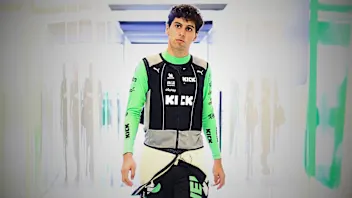 ExclusiveBortoleto on his rookie year and Audi excitement
ExclusiveBortoleto on his rookie year and Audi excitement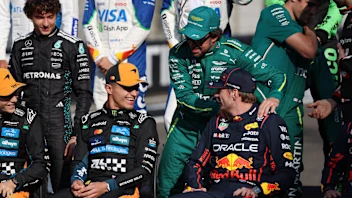 ExclusiveThe F1 team bosses choose their top 10 drivers of 2025
ExclusiveThe F1 team bosses choose their top 10 drivers of 2025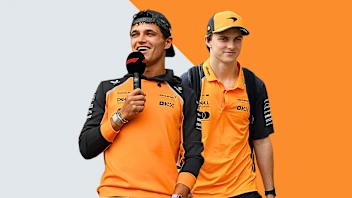 End Of Year Reports 2025McLaren’s best and worst moments from 2025
End Of Year Reports 2025McLaren’s best and worst moments from 2025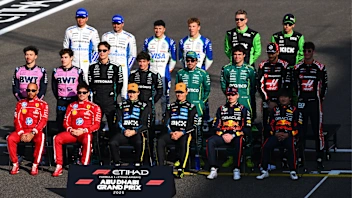 ExclusiveThe top 10 drivers of 2025 – as chosen by the drivers
ExclusiveThe top 10 drivers of 2025 – as chosen by the drivers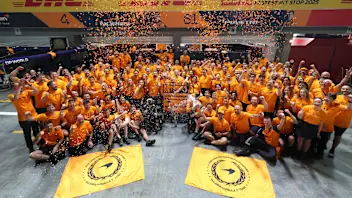 PalmerJolyon Palmer picks his top performers in 2025
PalmerJolyon Palmer picks his top performers in 2025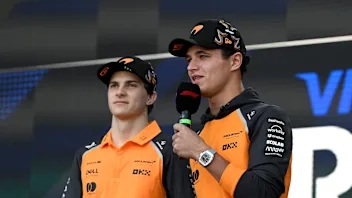 Piastri not expecting Norris’ title to change dynamics
Piastri not expecting Norris’ title to change dynamics